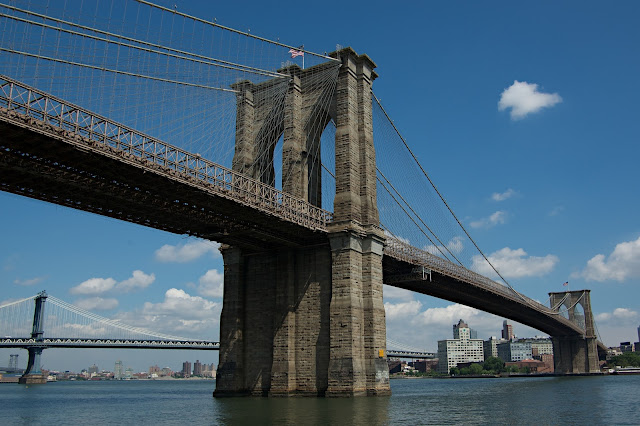 The Brooklyn Bridge and Its Hidden Wine Cellars:
The Brooklyn Bridge and Its Hidden Wine Cellars:
Construction Period:
- The Brooklyn Bridge, one of the most iconic landmarks in New York City, was constructed between 1869 and 1883 under the supervision of chief engineer John A. Roebling and later his son, Washington Roebling.
Construction Challenges:
- During the construction of the bridge, workers faced challenging conditions, including underwater work in caissons (structures used in the building of bridge piers) under the East River.
- The conditions were hazardous, with high-pressure environments and risk of "caisson disease" (now known as decompression sickness).
Wine Cellars in the Caissons:
- To alleviate some of the physical and mental stresses experienced by the workers, wine was provided in the caissons, essentially serving as makeshift wine cellars.
- The wine was believed to help combat the adverse effects of working in the high-pressure environment, acting as a sedative and providing some relief to the workers.
Role of Wine in Caisson Work:
- The workers who toiled in the caissons, often referred to as "sand hogs," endured physically demanding and dangerous conditions. Wine was believed to provide them with a sense of comfort and temporary relief from the strain and stress of their work.
- It's important to note that the provision of wine was a reflection of the understanding of the time regarding the potential benefits of alcohol in mitigating certain health issues, which differs from modern medical knowledge.
Completion and Legacy:
- The Brooklyn Bridge was completed and opened on May 24, 1883, connecting Brooklyn and Manhattan. It was a marvel of engineering at the time and remains a significant symbol of New York City today.
- The hidden wine cellars within the caissons were a historical anecdote associated with the bridge's construction and the efforts made to support the workers during that period.
The provision of wine to workers in the Brooklyn Bridge's caissons is a fascinating aspect of its construction history, highlighting the challenges faced by workers and the practices of that era aimed at addressing those challenges.


No comments:
Post a Comment
Contact The Wizard!
(he/him)